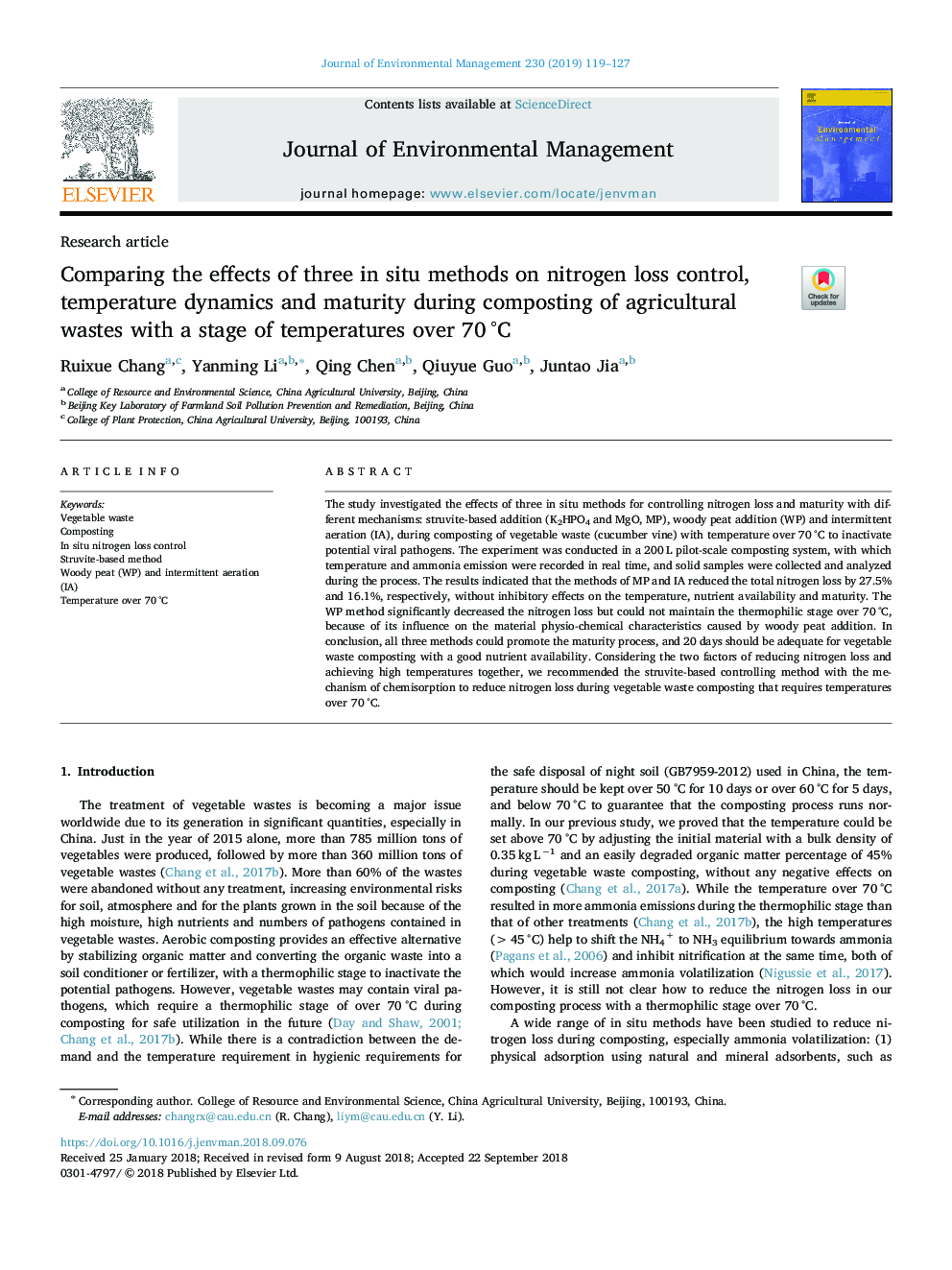| Article ID | Journal | Published Year | Pages | File Type |
|---|---|---|---|---|
| 11023228 | Journal of Environmental Management | 2019 | 9 Pages |
Abstract
The study investigated the effects of three in situ methods for controlling nitrogen loss and maturity with different mechanisms: struvite-based addition (K2HPO4 and MgO, MP), woody peat addition (WP) and intermittent aeration (IA), during composting of vegetable waste (cucumber vine) with temperature over 70â¯Â°C to inactivate potential viral pathogens. The experiment was conducted in a 200â¯L pilot-scale composting system, with which temperature and ammonia emission were recorded in real time, and solid samples were collected and analyzed during the process. The results indicated that the methods of MP and IA reduced the total nitrogen loss by 27.5% and 16.1%, respectively, without inhibitory effects on the temperature, nutrient availability and maturity. The WP method significantly decreased the nitrogen loss but could not maintain the thermophilic stage over 70â¯Â°C, because of its influence on the material physio-chemical characteristics caused by woody peat addition. In conclusion, all three methods could promote the maturity process, and 20 days should be adequate for vegetable waste composting with a good nutrient availability. Considering the two factors of reducing nitrogen loss and achieving high temperatures together, we recommended the struvite-based controlling method with the mechanism of chemisorption to reduce nitrogen loss during vegetable waste composting that requires temperatures over 70â¯Â°C.
Keywords
Related Topics
Physical Sciences and Engineering
Energy
Renewable Energy, Sustainability and the Environment
Authors
Ruixue Chang, Yanming Li, Qing Chen, Qiuyue Guo, Juntao Jia,
